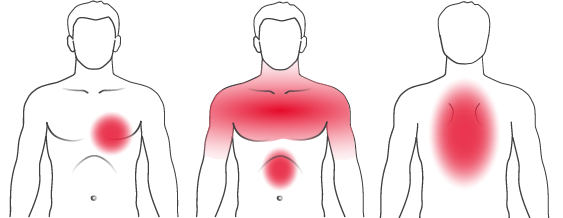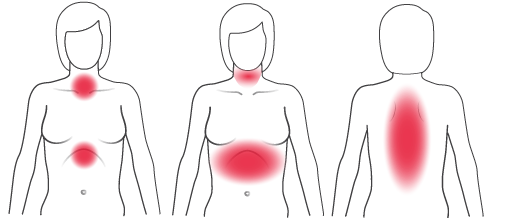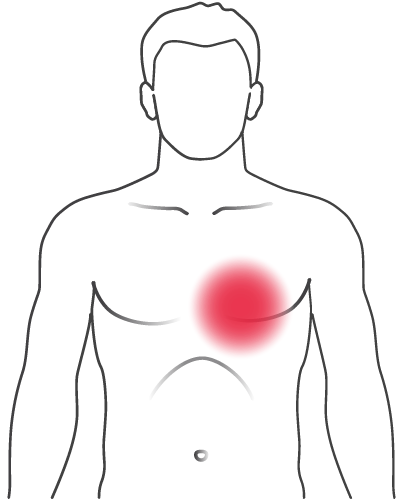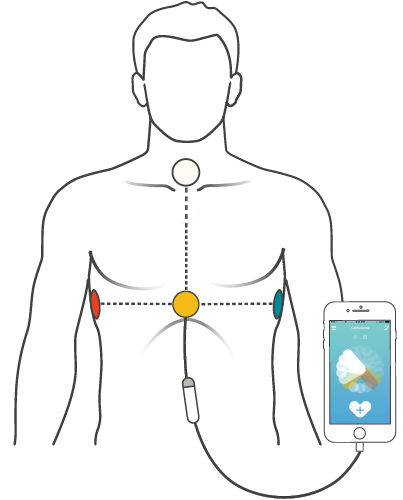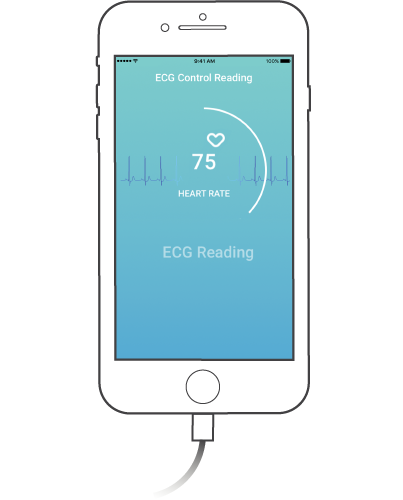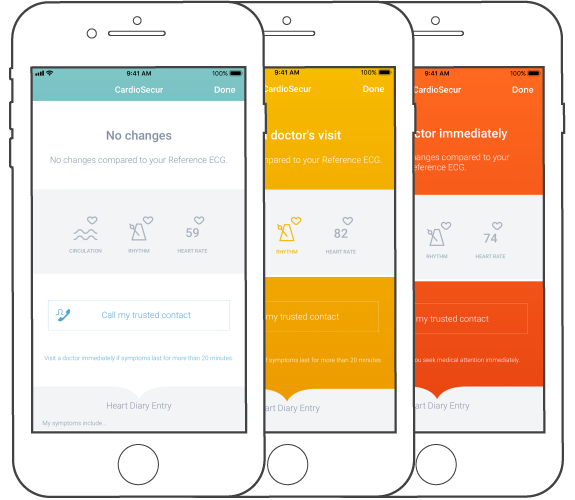Achieve the golden hour
After being diagnosed with a heart attack, the risk of a reinfarction within the next 5 years1 is 13% for men and up to 40% for women. When suffering from a heart attack, the first 60 minutes are decisive, and this time is therefore commonly referred to as the “golden hour.” It is only through rapid treatment that further heart damage, or even worse, can be prevented.
The symptoms of a reinfarction can also be considerably different from those of the initial event, causing repeat infarctions to often be falsely interpreted and reducing the likelihood of a timely diagnosis.
Heart attacks among women: symptoms are often overlooked
Symptoms of a heart attack for a woman can vary greatly from those for a man and are therefore not always immediately recognised. In addition to “classic symptoms,” such as difficulty breathing or pain in the chest, women often experience:
- Upper abdominal pain
- Shoulder, back, or spinal pain
- Leg or lower jaw pain
- Nausea and vomiting
- Dizziness, circulation problems, and severe fatigue
As symptoms of a heart attack often present before a major event occurs, it is particularly important for women to pay attention to these symptoms in order to recognize a possible heart attack as early as possible.
Mortality risk from reinfarction
The risk of death from a recurrent heart attack is almost twice as high as with an initial event. Approximately five percent of all affected suffer from a second infarction within six months after the first event.
It is for this reason that patients who have already suffered from a heart attack fear a repeat event, and have a strong desire for more reassurance. In particular, many of these individuals suffer from angina pectoris (chest pain) multiple times per week, and often feel unsure about what to do.
Regular heart checks prevent additional damage
In order to prevent damage to the heart after a heart attack, treatment within the first 60 minutes after symptoms begin is critical.
Use CardioSecur immediately when your first symptoms occur and receive a recommendation to act within minutes to know if you should seek medical attention or not.
You can thereby save previous time, which is important to help prevent additional damage to the heart. Additionally, CardioSecur can recognize infarcts of both the anterior and posterior walls of the heart.

